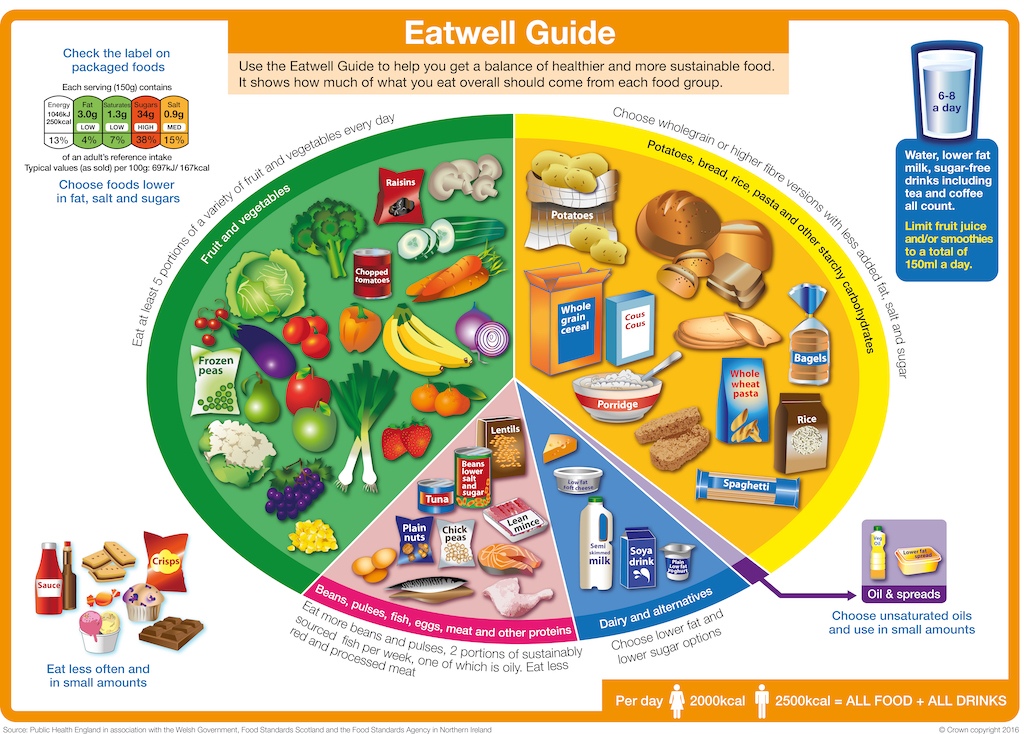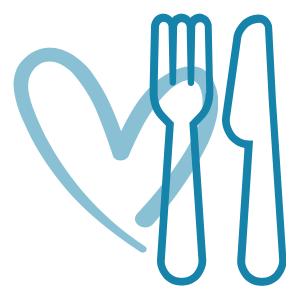The Eatwell Guide sets out advice from the UK government on healthy eating and what a healthy balanced diet looks like using visual representations that are proportioned according to government guidelines. It is suitable for most healthy adults and children aged 5 and over, regardless of weight or dietary preferences.
Eatwell Guide

Source: Public Health England in association with the Welsh government, Food Standards Scotland and the Food Standards Agency in Northern Ireland
Subject to Crown copyright protection, which is covered by an Open Government Licence
How it works
The proportions in the graphic above represent food consumed over a period of time, so say a day or a week and do not necessarily reflect what would be consumed at every mealtime.
The majority of foods, just under 80%, should come from the green (fruit and veg) and the yellow (carbohydrate) sections. So at least 5 servings of fruit and veg a day. One serving is about 80g. It’s an idea to familiarise yourself with how this looks in terms of cooked vegetables, salads or fruit. Limit fruit juice and/or smoothies to 150ml per day. Where possible carbohydrates should be high in fibre or wholegrain, without additional fat, salt or sugar. Proteins in the pink section should consist of lean, preferably white meat, eggs, 2 portions of fish per week, one of which should be an oily fish and/or beans and pulses. Limit red or processed meat to 70g or less per day. Dairy products or dairy substitutes in the blue section should be lower fat, lower sugar options. Oils and spreads in the purple section should be unsaturated and used sparingly whilst snacks such as crisps, cakes, biscuits, confectionery sit on the outer edge of the graphic as they are non-essential and consumed infrequently.
Drinks, around 6 to 8 cups per day, should be sugar free, with low fat milk in tea or coffee.
The aim is to eat a wide variety of foods from the different sections to give yourself the best opportunity of consuming all the macronutrients (carbohydrate, protein and fat) and micronutrients (vitamins and minerals) required to keep your body healthy.
Check food labels and avoid foods high in fat, sugar and salt.
For more detailed information here is a link to the Eatwell Guide 12 page booklet. Keep it to hand as a useful reference when you are out shopping, planning meals or cooking meals.
